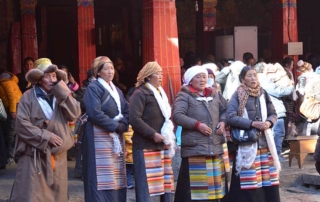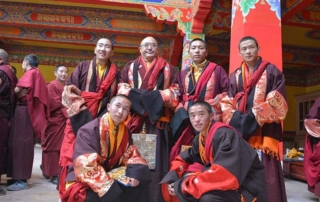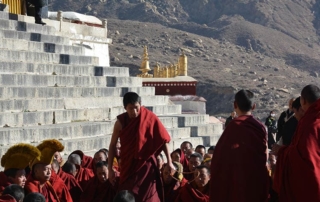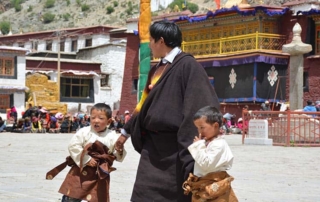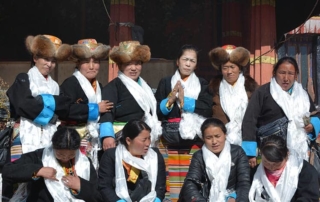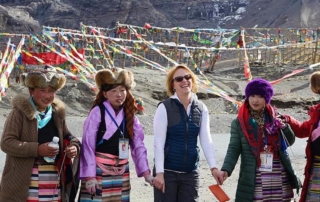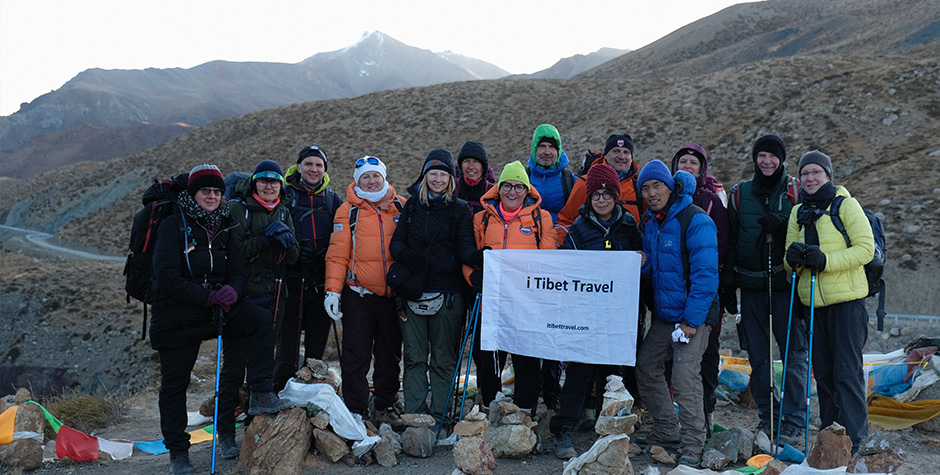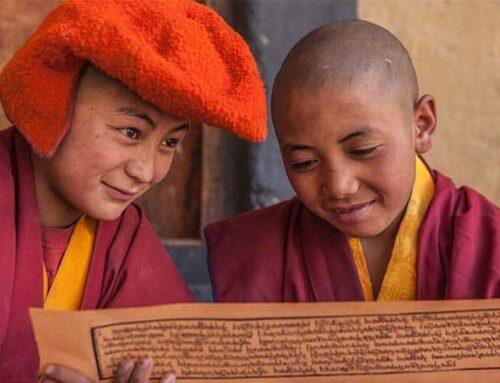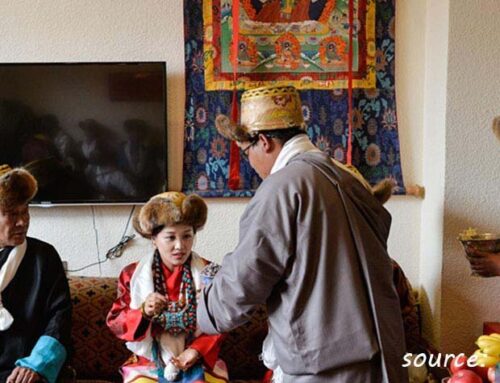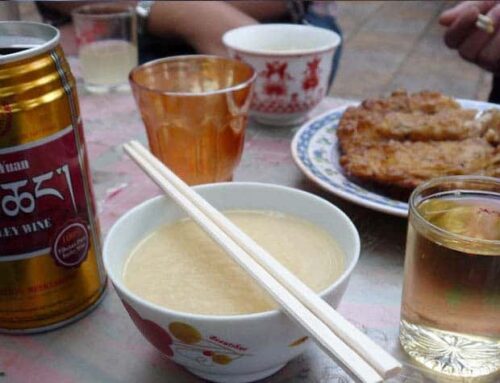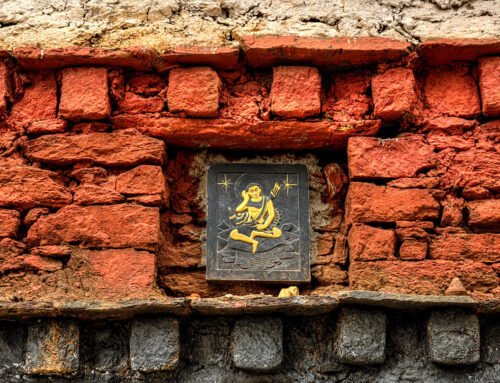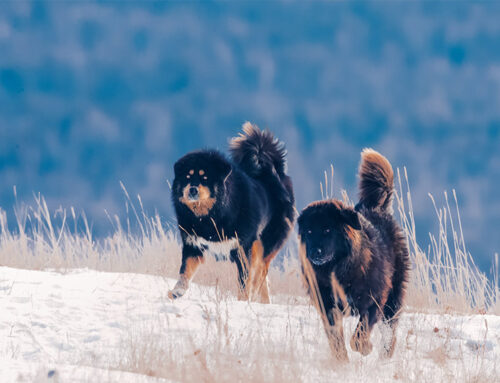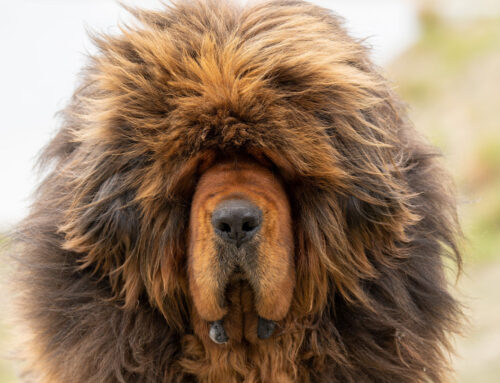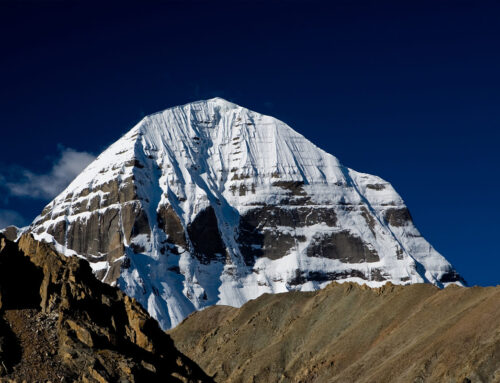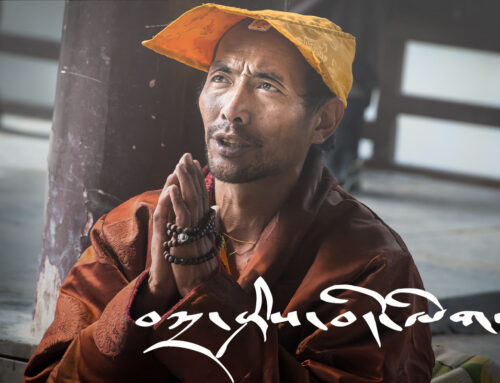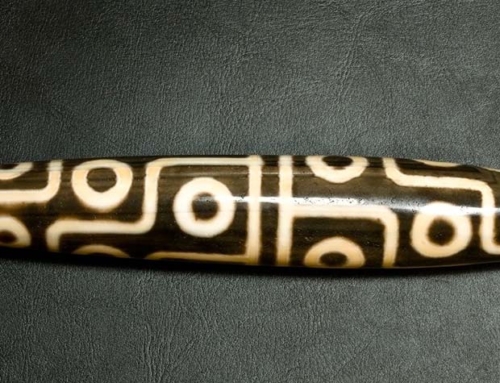Environment and Climatic Condition of the local are the main factors deciding on the cloth wear by Tibetan. The main clothing item in Tibet is robe (we call it Cuba). All the major traditional Tibetan clothing items are woven with Yak and Sheep wool. Tibetan robes are of the body high, open upper front and using a piece of cloth to tie it up. Tibetan robes are loose, comfy and wide.
In the farming area, the robes are usually made of thin wool cloth and cotton. Women in the farming area also use sleeveless robes in the summer season.
In the Nomadic area, the robes are usually made of animal skin (leather)for winter. But there also make the robe with woolen clothes for summer time.
For the shirt, Nomad, and farmers will have a shirt made with the raw-silk. These raw silks are traditionally importing from Bhutan. Men’s shirt is large with long sleeves. Women wear a very short and small shirt inside their robes. Women robes are usually tighter and easier to wear. Women would also wear the colorfully patterned apron. In some area, the apron signifies she is married But not necessarily in all the regions.
Every Tibetan will usually have two sets of traditional dress, one as the special dress for the festival and special social events like marriage and another for the daily uses. Most of the time all the special dress would be made from silk and cotton with an inner layer made with a woolen blanket. Day to day clothes is made as per the climate, woolen for winter and cotton for summer use.
Many historians are saying; we have got the Tibetan Chuba from Mongols, which is why it looks similar to the Mongols traditional dress. During the old days, the dress can differentiate the ranking of the person and his family in society. But nowadays all wear the same dress and dress used by the aristocrat family in old time are not frequently used.
Traditional Tibetan Clothing Materials
Most prominent used material for Traditional Tibetan Clothing is wool from Yak and Sheep. Tibet is located in very high elevation and we don’t have any other source of fiber to make clothes in the old days.
Majority of Tibetan clothes are produced with wool from Yaks and Sheep. Most garments are produced only for domestic consumptions. Generally, the woolen Clothes produces in Tibet are of five kinds. This differentiation is base on the finest of the clothes and the purpose. following are some of the most important clothing material we use in our traditional dress.
1. Nambu (སྣམ་བུ་)
Nambu is the most common fabric used in old Tibet for Making a dress. It is a little thicker and easier to make. Since it takes less time to make, it is cheaper in the market and hence commonly used by ordinary people and ordinary monks to make their dress. It is also used to make Tibetan boot called Sumba. Since it is less refined and release lots of hairs, It can only be a wash to clean it. Nambu is used in Central Tibet for making the apron for the Ladies and also apply for making Tibetan boot call Sumba
Nowadays It is commonly used in making Ladies handbags and gift to buy as the souvenir by the tourist. You can find a lot of products made by local from the Nambu fabric.
2. Shedma (ཤད་མ་)
Shedma is the finest clothes woven with wool. It is so subtle that it takes a lot of labour time to produce. So it is more expensive. Only used by the well-off families to make their dress. The high lamas and Aristocrat family often use it. Since it is a weave with much care. The texture of the Shedma is so soft in touch and shiny. The value of the Shedma is generally base on the finest, softness and shine on the surface.
To keep the shine of the texture, we would make a Pak (Dough of Tsampa) and roll it on the cloth to take away the dust and other impurities from the Cloth. Shedma is also using in making the apron for Ladies in the Lhasa region and Boots for higher and more affluent people.
3. Bure the raw silk (འབུ་རས་)
Bure is the traditional raw silk cloth we use for making Tibetan Shirts. Bure is traditionally importing from Bhutan and India.
4. Silk (གོས་ཆན་)
Silk is widely used now for making Tibetan robe. During the old time, only the rich families can effort to make the dress out of the silk. Silk is mainly brought from other parts of China. Silk is also used for framing Thangka and decorating the monasteries.
Tibetan Men’s Clothes
The Traditional Tibetan Clothing for men, all over the Tibet is basically the same. Men dress in Chuba, baggy trousers and Sumba shoe. Most of the time they will be wear cowboy caps. In the summertime they will use chuba made from the cotton cloth and in the winter time, they will using the chuba made from the wool cloth. In the winter time, they will be wearing the additional coat made from sheepskin. Mens Chuba is usually bulky and sleeves as huge enough to use as gloves in the winter time.
The border of the chuba will be decorated with fur and silk. Since nowadays fur is becoming very rare with the government effort to limit the fur trade from the Rare Wild Animals. Nowadays they will commonly use silk decorating in Cuba. Mens cube will be wear to the knee high with the belt.
Tibetan Women’s Clothes
For women Traditional Tibetan Clothing would be sleeveless Chupa in the summer days. In the winter time, they will wear full sleeve, Chuba. Women from Kham and Amdo traditional background have a cube in a different style. They Chuba looks like a men’s chuba but can be worn differently. When you are touring in Tibet you can clearly make out khan and Amdo women. Khampa women love to wear cowboy caps nowadays.
Married women would wear colorfully striped aprons. this is a sign to show they are married. But in some remote region, a small girl would wear it too. The apron is made from wool and it is to keep them warm.
In the winter times, women in Lhasa would like to wear shawls on their Chupa. they would also wear a thicker coat to the knee length.
Tibetan Monks Robe
Besides being a follower of Buddha, Tibetan Buddhist monk and monks from the traditional Buddhist culture like that of Myanmar and Thailand is different. The difference is only due to the climatically condition of Tibet. Tibet is a cold and dry region and traditional Buddhist robe would not suit well for monks in Tibet. So the Traditional Tibetan clothing for Monks is maroon coloured robe instead of the traditional yellow colour robe of Buddha.
All the monk’s robes are made of wool cloth. Traditionally the monks are not supposed to wear a completely new cloth. which is why they would make their new cloth with a piece from they used cloth. Monks are not supposed to wear sleeves and they will use their shawls to cover their arms in the winter. Read more here
I Tibet Travel & Tours is a local travel agency in Tibet that offers unique and authentic experiences to travelers from all around the world. As a leading tour operator in Tibet, we provide high-quality Tibet Travel services that are tailored to our clients’ needs and preferences.
Our team of experienced and knowledgeable professionals strives to ensure that our clients have a hassle-free and memorable Tibet Tour. We specialize in various types of tours, including cultural tours, trekking and hiking tours, and adventure tours.
Our commitment to providing exceptional service has earned us a reputation as one of the best local travel agencies in Tibet. Contact us today to plan your unforgettable trip to Tibet.
Explore Tibet with a local Tibetan Travel Agency
If you’re looking to explore Tibet, starting your journey with a reputable Tibetan travel agency in Tibet is crucial. Tibet Travel & Tours is a great choice to begin your adventure with their extensive knowledge of the region and commitment to responsible tourism.
Their Tibet tour packages cater to a range of interests and budgets, making it easy to plan a trip that suits your needs. Before embarking on your tibet tour, it’s essential to have the right Tibet travel information and necessary documents, including a Tibet travel permit.
The Tibet Travel Planner provided by i-Tibet travel is an excellent resource to plan your trip, including tips on what to pack, where to stay, and what to see.
For beginners, the “About Tibet” guide provided by i-Tibet travel offers a comprehensive overview of the region’s history, culture, and top attractions. So, start your Tibet travel plan here with i-Tibet travel and discover the magic of Tibet for yourself.

